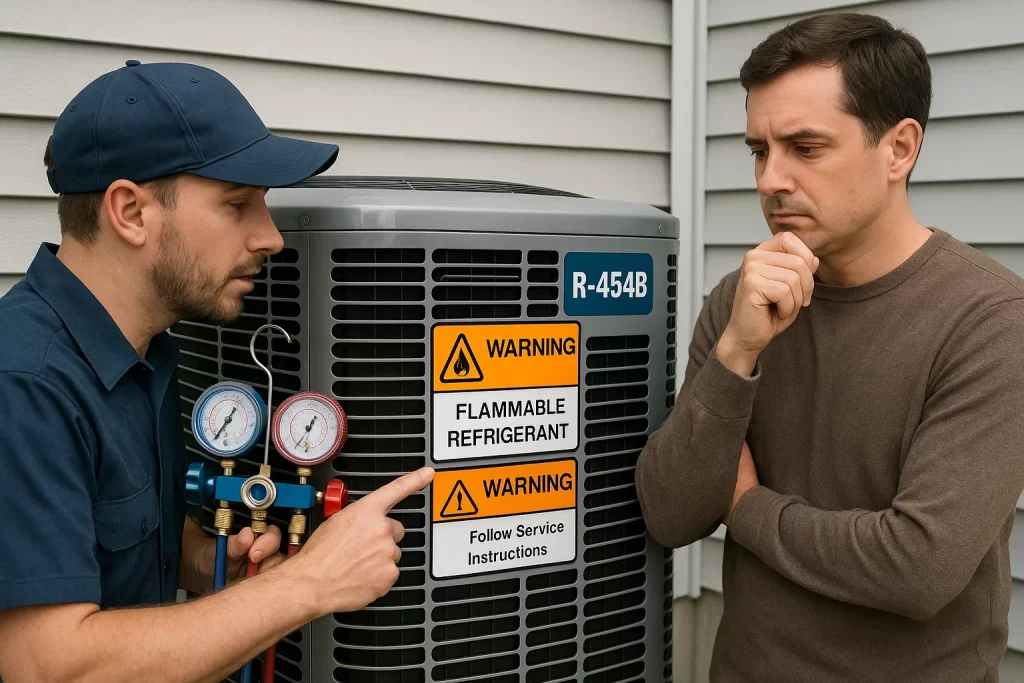If you’ve recently looked into replacing or repairing your air conditioner, you may be feeling a bit of sticker shock. You’re not imagining it—AC systems are more expensive in 2025. From government regulations to global supply challenges, several key factors are driving up costs across the board. Here’s what’s happening behind the scenes and why homeowners are paying more this year for air conditioner installation in Orlando, FL and across the country.

New Refrigerants Come with New Costs
One of the biggest changes hitting the HVAC industry in 2025 is the transition to new refrigerants. Older systems used R-410A, but due to environmental concerns, new units are shifting to alternatives like R-32 and R-454B. These new refrigerants are more efficient and have a lower global warming potential, but there’s a catch: some, like R-454B, are mildly flammable because they are propane-based.
Because of this, manufacturers are now required to ship air conditioners with only a partial refrigerant charge. This means HVAC technicians must finish charging the unit onsite with specialized training and equipment. That adds both time and labor costs. Plus, the new refrigerant itself is more expensive per pound than R-410A used to be. These costs add up quickly for both manufacturers and homeowners.
Tariffs and Material Costs Are on the Rise
The cost of raw materials used to manufacture air conditioners is also climbing. Tariffs on imported metals and components from overseas suppliers have increased, affecting everything from compressor parts to aluminum coils. Since many HVAC components are sourced globally, these tariffs make a noticeable impact on the final price tag.
Even common items like copper tubing and sheet metal used in AC construction have seen price hikes due to international trade shifts. All of these costs eventually get passed down to the consumer.
Manufacturer Price Increases Are an Annual Trend
In addition to new refrigerants and global supply chain issues, manufacturers also implement annual price increases on air conditioners and parts. These price adjustments reflect rising labor costs, research and development investments, and inflation. In 2025, the cumulative effect of these standard hikes—combined with the unique challenges of this year—has been especially steep.
Whether you’re looking to replace an entire system or just repair an aging one, you may notice that parts that were affordable just a few years ago now come with a much higher price tag.
Thermostat Placement Matters: Are You Making These Common Mistakes?
While you’re thinking about system efficiency and upgrades, don’t overlook something simple: where your thermostat is located. Poor thermostat placement can make your AC work harder than necessary, increasing your utility bills and shortening the life of your system.
Avoid placing your thermostat in direct sunlight, near lamps or appliances that generate heat, or close to windows and doors. These locations can cause the thermostat to misread the room temperature, leading to unnecessary cooling cycles. Ideally, your thermostat should be centrally located on an interior wall, away from drafts and heat sources. A professional technician can help you determine the best spot to maximize comfort and efficiency.
Contact Gary Munson Heating & Air Conditioning for air conditioner installation in Orlando, FL. You’ll be more comfortable with the best!

